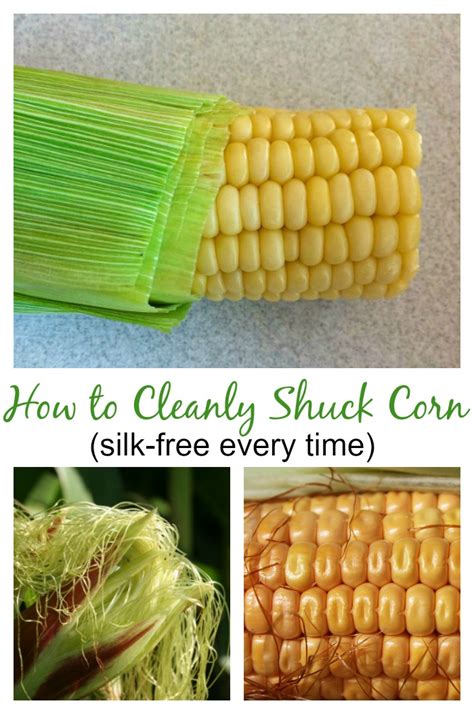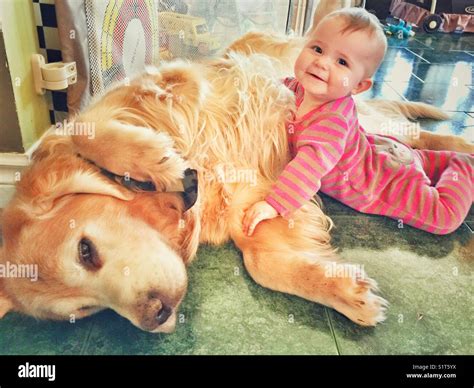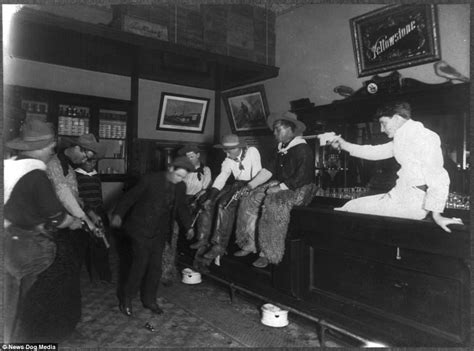
The tedious task of removing corn silk just got easier thanks to a simple microwave trick. Food experts are touting the method as a game-changer for corn on the cob enthusiasts, allowing for hassle-free preparation and minimal mess.
Forget painstakingly picking off each strand of silk; this method leverages the power of your microwave to loosen the silk, making it easily removable. According to food blog posts and culinary experts, microwaving corn in its husk for a short period allows the moisture inside to create steam, effectively separating the silk from the kernels. This technique has been gaining popularity on social media platforms, with users sharing their successful results and praising the efficiency of the method. The recommended time varies depending on the microwave’s wattage and the size of the corn, but typically ranges from 2-4 minutes.
The conventional method of shucking corn often involves peeling back the husk and manually removing the silk, which can be time-consuming and messy. The fine, sticky strands cling tightly to the kernels, making them difficult to remove completely. This new microwave hack addresses these issues by using steam to naturally loosen the silk, streamlining the process and reducing frustration.
To perform the trick, simply place the unhusked corn in the microwave and cook it on high for the appropriate amount of time. Once cooked, carefully remove the corn (it will be hot!) and cut off the stalk end with a knife. Squeeze the corn from the top, and the cob should slide out relatively free of silk. Some users recommend using oven mitts or tongs to handle the hot corn and protect their hands from burns.
Beyond the ease of silk removal, proponents of this method also note that it helps to preserve the moisture of the corn, resulting in a more flavorful and succulent final product. This is because the husk acts as a natural steamer, locking in the corn’s natural juices and preventing it from drying out during cooking.
While this microwave hack has garnered significant praise, it’s essential to exercise caution when handling hot corn. It is also important to adjust the cooking time based on the microwave’s wattage and the size of the corn to prevent overcooking or burning.
This microwave method has been widely circulated among food bloggers and home cooks, who praise its simplicity and effectiveness. Numerous online tutorials and videos demonstrate the technique, offering visual guidance and tips for achieving optimal results. The hack’s popularity stems from its ability to transform a traditionally tedious task into a quick and easy process, making it a welcome addition to any corn lover’s kitchen toolkit.
The technique is not just limited to microwaving. Some variations involve soaking the corn in water before microwaving to further enhance the steaming effect. Others suggest allowing the corn to cool slightly before removing it from the husk, as this can make it easier to handle and prevent burns. Ultimately, the success of the microwave hack depends on individual preferences and experimentation to determine the optimal cooking time and method.
The discovery of this corn shucking hack shows the innovative ways people are finding to simplify kitchen tasks. By utilizing the power of the microwave, home cooks can now enjoy fresh corn on the cob without the hassle of traditional shucking methods.
In-Depth Analysis and Background:
The process of shucking corn has long been a source of frustration for cooks. The silk, or corn hairs, are the stigmas of the female flower of the corn plant. Each strand is connected to an individual kernel, and their role is to receive pollen. While essential for the corn’s reproductive process, these strands become a nuisance when preparing corn for consumption. The traditional method of removing the husk and manually picking off the silk is time-consuming and often results in lingering strands that are difficult to remove.
The microwave hack addresses these issues by utilizing steam to loosen the silk’s grip on the kernels. When the corn is microwaved in its husk, the moisture inside turns into steam, which permeates the entire cob. This steam softens the silk and loosens its attachment to the kernels, making it much easier to remove. The process also helps to cook the corn slightly, which can further contribute to the silk’s detachment.
The popularity of this hack is not surprising, given the widespread appeal of corn on the cob. Corn is a versatile and nutritious food that can be enjoyed in a variety of ways. It is often grilled, boiled, steamed, or roasted, and it can be served as a side dish, a main course, or even a snack. The ability to quickly and easily shuck corn makes it even more appealing to home cooks.
The microwave hack is just one example of the many innovative ways that people are using technology to simplify kitchen tasks. From electric pressure cookers to immersion blenders, modern appliances have revolutionized the way we cook and prepare food. These tools not only save time and effort but also allow us to explore new culinary techniques and experiment with different flavors and ingredients.
The use of microwaves in cooking has been a subject of debate for many years. While some people are hesitant to use microwaves due to concerns about radiation and nutrient loss, others view them as a convenient and efficient way to cook food. Studies have shown that microwaving can actually preserve more nutrients than other cooking methods, such as boiling, as it requires less water and shorter cooking times.
In the case of corn on the cob, microwaving can be a particularly effective way to preserve its natural sweetness and moisture. The husk acts as a natural steamer, locking in the corn’s juices and preventing it from drying out. This results in a more flavorful and succulent final product.
Of course, it is important to use caution when microwaving corn, as it can become very hot. It is essential to use oven mitts or tongs to handle the hot corn and protect your hands from burns. It is also important to adjust the cooking time based on the microwave’s wattage and the size of the corn to prevent overcooking or burning.
Expanded Context and Additional Information:
While the microwave trick provides a fast solution, its effectiveness can vary depending on a few factors. The type of corn, its freshness, and the power of the microwave all play a role in how easily the silk detaches. Some users have found that the method works best with fresh corn, while others have reported success with corn that has been stored for a few days. Similarly, higher-wattage microwaves may require shorter cooking times to avoid overcooking the corn.
It’s also worth noting that while the microwave method significantly reduces the amount of silk, it may not eliminate it entirely. Some fine strands may still cling to the kernels, requiring a quick manual removal. However, the overall process is still significantly faster and less frustrating than traditional shucking methods.
Alternative methods for shucking corn include using a vegetable brush to scrub the silk off the kernels or soaking the corn in cold water for a few minutes before shucking. These methods can be effective, but they may not be as quick or convenient as the microwave hack.
Beyond the ease of shucking, the microwave method also offers potential benefits in terms of flavor and texture. By cooking the corn in its husk, the kernels are steamed in their own juices, which can enhance their natural sweetness and prevent them from drying out. This can result in a more flavorful and succulent final product, compared to boiling or grilling methods that can sometimes dry out the corn.
However, it’s important to note that microwaving can also affect the texture of the corn. Some users have found that microwaved corn can be slightly softer than corn cooked using other methods. This may be a matter of personal preference, and it can be mitigated by adjusting the cooking time.
For those who are concerned about the potential health effects of microwaving, it’s important to remember that microwaves are a form of electromagnetic radiation that heats food by causing water molecules to vibrate. This process does not change the chemical composition of the food or make it radioactive. In fact, studies have shown that microwaving can actually preserve more nutrients than other cooking methods, as it requires less water and shorter cooking times.
The microwave corn shucking hack is a testament to the ingenuity of home cooks and their willingness to experiment with new techniques. It’s a simple and effective solution to a common kitchen problem, and it’s no surprise that it has gained such widespread popularity. Whether you’re a seasoned chef or a novice cook, this hack is worth trying the next time you’re preparing corn on the cob.
More Details on Microwave Cooking Times and Safety:
The optimal microwave cooking time for corn on the cob varies depending on several factors, including the wattage of the microwave, the size and number of ears of corn, and personal preference for doneness. A general guideline is to microwave one or two ears of corn for 3-4 minutes on high. For each additional ear, add approximately 2 minutes to the cooking time.
It is essential to exercise caution when handling microwaved corn, as it can become very hot. Use oven mitts or tongs to remove the corn from the microwave and to hold it while shucking. Cutting off the stalk end before squeezing the corn out of the husk can also help to prevent burns.
To ensure even cooking, it is recommended to rotate the corn halfway through the cooking time. This will help to distribute the heat evenly and prevent some areas from overcooking while others remain undercooked.
If you are unsure about the optimal cooking time for your microwave, it is best to start with a shorter time and then add more time as needed. You can always cook the corn for a longer period, but you cannot undo overcooking.
Some users recommend soaking the corn in water for a few minutes before microwaving to further enhance the steaming effect. This can help to ensure that the corn is evenly cooked and that the silk is easily removed.
It is also important to note that microwaving corn in its husk can create a significant amount of steam, which can potentially damage the microwave. To prevent this, it is recommended to vent the husk by cutting a small slit in the top before microwaving. This will allow the steam to escape and prevent pressure from building up inside the husk.
Different Variations and Techniques:
The basic microwave corn shucking hack can be adapted to suit individual preferences and needs. Some variations include:
- Soaking the corn: Soaking the corn in cold water for 30 minutes before microwaving can help to hydrate the kernels and make them more plump and juicy. It can also help to loosen the silk and make it easier to remove.
- Adding butter or herbs: Adding a pat of butter or some fresh herbs to the husk before microwaving can infuse the corn with flavor. This is a simple way to add a little extra zing to your corn on the cob.
- Grilling after microwaving: For a smoky flavor, you can grill the corn for a few minutes after microwaving. This will give the corn a slightly charred exterior and a delicious smoky taste.
- Using a microwave steamer: If you have a microwave steamer, you can use it to cook the corn instead of microwaving it directly in its husk. This can help to prevent the corn from drying out and ensure that it is evenly cooked.
- Cooling the corn slightly: Allow the corn to cool slightly before removing it from the husk. This can make it easier to handle and prevent burns.
The Science Behind the Hack:
The success of the microwave corn shucking hack is based on the principles of heat transfer and steam generation. When the corn is microwaved, the water molecules inside the kernels and the husk absorb the microwave energy and begin to vibrate. This vibration generates heat, which causes the water to turn into steam.
The steam then permeates the entire cob, softening the silk and loosening its attachment to the kernels. The pressure of the steam also helps to separate the husk from the corn, making it easier to remove.
The microwave also cooks the corn slightly, which can further contribute to the silk’s detachment. The heat denatures the proteins in the silk, making it less sticky and easier to remove.
Benefits Beyond Convenience:
Beyond the obvious convenience of easy silk removal, this method can offer several additional benefits:
- Enhanced Flavor: Cooking the corn in its husk steams the kernels, preserving their natural sweetness and preventing them from drying out. This results in a more flavorful and succulent corn on the cob.
- Nutrient Retention: Microwaving generally preserves more nutrients than boiling because it requires less water and a shorter cooking time. Water-soluble vitamins, in particular, are less likely to leach out during microwaving.
- Reduced Mess: The husk contains most of the mess associated with shucking corn, preventing silk from scattering around the kitchen.
- Consistent Results: With a little practice, this method provides consistent results, ensuring perfectly cooked and easily shucked corn every time.
Addressing Potential Concerns:
While the microwave corn shucking hack is generally safe and effective, some users may have concerns about potential risks:
- Burns: Handling hot corn can cause burns. Use oven mitts or tongs to protect your hands.
- Microwave Safety: Ensure your microwave is in good working order and follow the manufacturer’s instructions. Avoid microwaving metal objects or damaged containers.
- Nutrient Loss: While microwaving generally preserves more nutrients than boiling, overcooking can still lead to nutrient loss. Monitor the cooking time carefully to prevent overcooking.
- Texture: Microwaving can sometimes result in a slightly softer texture. Adjust the cooking time to achieve your desired level of firmness.
The Cultural Significance of Corn:
Corn, also known as maize, has been a staple food for thousands of years, particularly in the Americas. It is a versatile and nutritious grain that can be used in a wide variety of dishes. Corn is also a significant part of many cultures, playing an important role in religious ceremonies, festivals, and traditional meals.
In many Native American cultures, corn is considered a sacred plant, representing life, sustenance, and fertility. Corn is often featured in traditional stories, dances, and artwork.
Corn also plays a significant role in the economies of many countries. It is a major crop in the United States, China, Brazil, and other countries. Corn is used to produce a wide variety of products, including food, animal feed, ethanol, and plastics.
The microwave corn shucking hack is just one small example of the many ways that people are adapting and innovating to make the most of this versatile and important food.
FAQ:
Q1: How long should I microwave the corn?
A1: The recommended time varies depending on your microwave’s wattage and the size of the corn. Start with 3-4 minutes for one or two ears and add approximately 2 minutes for each additional ear. Rotate the corn halfway through to ensure even cooking. Adjust the time as needed based on your microwave’s power.
Q2: Is it safe to microwave corn in its husk?
A2: Yes, it is generally safe to microwave corn in its husk. However, it’s important to vent the husk by cutting a small slit in the top to allow steam to escape and prevent pressure from building up. Also, always use oven mitts or tongs to handle the hot corn.
Q3: Will this method remove all of the silk from the corn?
A3: While this method significantly reduces the amount of silk, it may not eliminate it entirely. Some fine strands may still cling to the kernels, requiring a quick manual removal. However, the overall process is still much faster and easier than traditional shucking methods.
Q4: Does microwaving corn affect its flavor or texture?
A4: Microwaving corn in its husk can actually enhance its flavor by steaming the kernels in their own juices, which preserves their natural sweetness. Some users find that microwaved corn can be slightly softer, but this can be adjusted by modifying the cooking time.
Q5: What if I don’t have a microwave? Are there other easy ways to shuck corn?
A5: Yes, alternative methods include using a vegetable brush to scrub the silk off the kernels or soaking the corn in cold water for a few minutes before shucking. While these methods may not be as quick as the microwave hack, they can still be effective.









